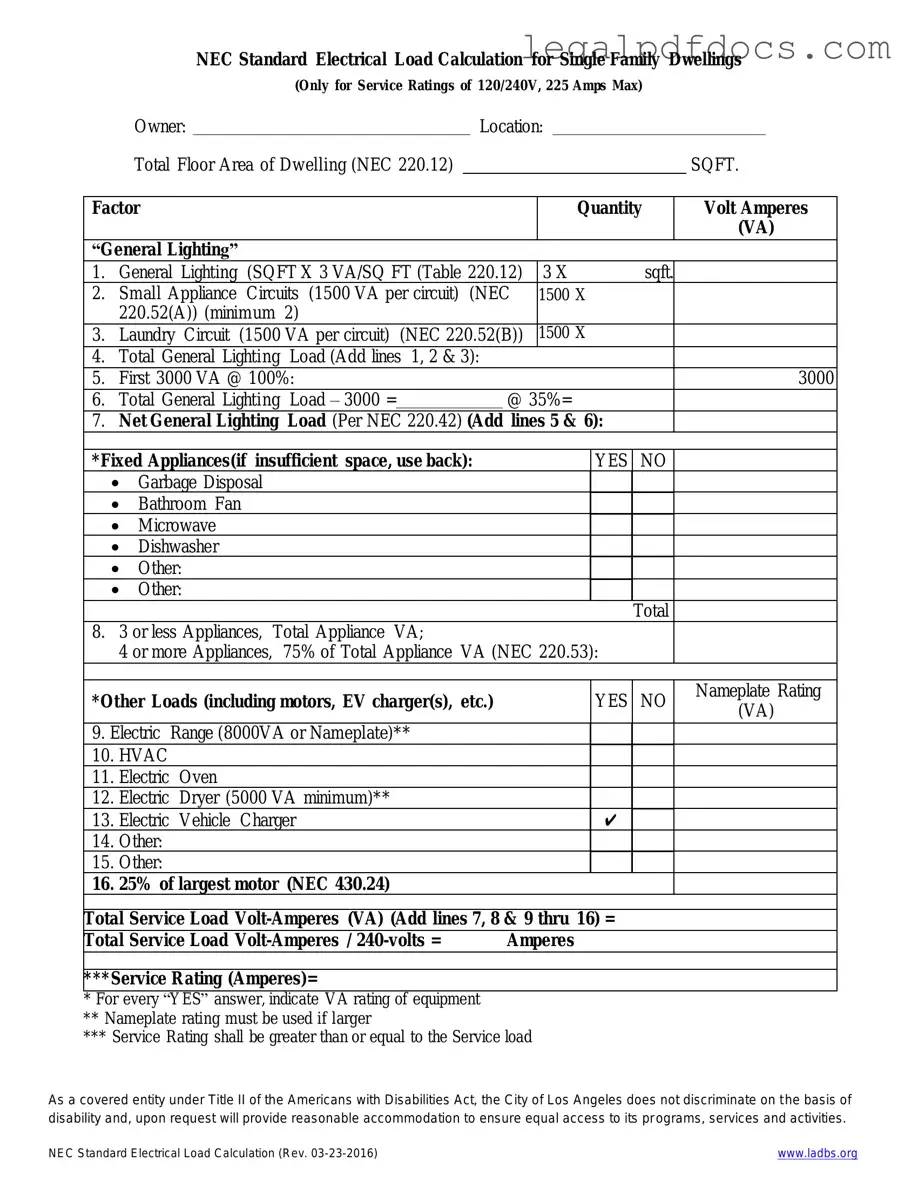Fill Out a Valid LADBS NEC Standard Electrical Load Calculation Template
The LADBS NEC Standard Electrical Load Calculation form is a vital document used to determine the electrical load requirements for buildings and structures in compliance with the National Electrical Code. This form helps ensure that electrical systems are safely designed to handle the anticipated demand, promoting both efficiency and safety. Understanding how to accurately fill out this form is crucial for anyone involved in construction or electrical work.
Ready to get started? Fill out the form by clicking the button below!
Open LADBS NEC Standard Electrical Load Calculation Editor Here
